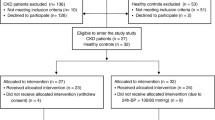Abstract.
The renal concentrating defect typical for chronic K depletion has been ascribed to malfunction of renomedullary cells caused by inadequate accumulation of organic osmolytes. A reduction in intracellular ionic strength, which is believed to influence decisively the accumulation of organic osmolytes, has been held responsible for insufficient osmolyte accumulation. To test this hypothesis, intra- and extracellular Na, Cl and K concentrations, the major determinants of ionic strength, were measured in the papilla by electron microprobe analysis and organic osmolytes (glycerophosphorylcholine, betaine, sorbitol, myo-inositol, free amino acids) in inner-medullary tissue by HPLC in antidiuretic rats kept on either a control (normal-K) or a K-deplete (low-K) diet and in euhydrated rats with free access to water and control diet. K depletion was associated with a reduced urine concentrating ability. Papillary interstitial ionic strength (sum of Na, Cl and K) in antidiuretic low-K rats was significantly reduced compared with antidiuretic normal-K rats (688±19 vs.971±61 mmol/kg wet wt) but was similar to that in euhydrated normal-K rats (643±35 mmol/kg wet wt). The lower interstitial ionic strength in antidiuretic low-K and euhydrated normal-K rats was associated with a lower total content of organic osmolytes in the inner medulla (365±14 and 381±20, respectively, vs. 465±11 mmol/kg protein in antidiuretic normal-K rats). Intracellular ionic strength (sum of Na, Cl and K) of papillary collecting duct cells, however, was similar in antidiuretic normal-K and euhydrated normal-K rats (171±5 and 179±11 mmol/kg wet wt) but lower in antidiuretic low-K rats (138±9 mmol/kg wet wt). These results do not support the view that, in the steady state of osmotic adaptation of renomedullary cells in situ, intracellular ionic strength is the decisive factor for maintaining high levels of organic osmolytes. During chronic K depletion, reduced osmolyte accumulation by renomedullary cells may be the consequence, rather than the cause, of lower medullary interstitial tonicity.
Similar content being viewed by others
Author information
Authors and Affiliations
Additional information
Received after revision and accepted: 18 October 1999
Electronic Publication
Rights and permissions
About this article
Cite this article
Beck, FX., Müller, E., Fraek, ML. et al. Inner-medullary organic osmolytes and inorganic electrolytes in K depletion. Pflügers Arch – Eur J Physiol 439, 471–476 (2000). https://doi.org/10.1007/s004249900199
Received:
Published:
Issue Date:
DOI: https://doi.org/10.1007/s004249900199




